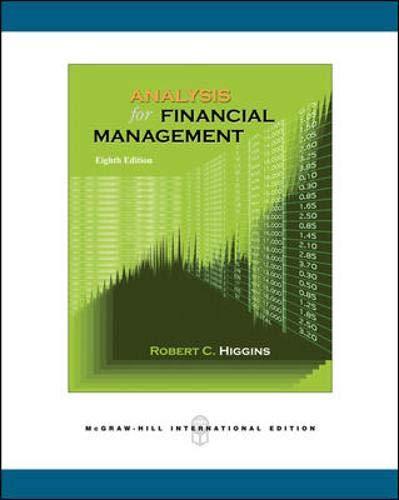
Wood Warehousing has property insurance on a replacement cost basis with a $5,000 per occurrence deductible. It can install automatic sprinklers in its warehouse for an initial cost of $10,000. The sprinklers will last five years. Annual maintenance of the sprinklers will be $1,000, payable at the end of each year for the first four years from the time of installation. If Wood installs the sprinklers, it will deduct one-fourth of the installation price at the end of each year for the first four years as depreciation for tax purposes. Without the sprinklers, the firm believes that its expected cash outflow for losses less than the deductible will be $1,000 per year and that its insurance premium will be $10,000 per year. With the sprinklers, it believes that its expected cash outflow for losses less than the deductible will be $500 per year and that its insurance premium will be $7,000 per year. Wood's opportunity cost of capital for this decision is 10 percent. Retained losses are paid and deductible for tax purposes at the end of each year. Insurance premiums are paid at the beginning of the year and are deductible for tax purposes when paid. The tax rate is 34 percent. Now say that you friends are considering whether to major in accounting in college, and they are asking for your opinion. To show your friends that accounting is important and matters for real corporate decisions, the task is to modify one of the accounting treatments in the above question so that the capital budgeting decision on installing the sprinklers would reverse. Round to the closest integer when calculating your answer. Wood Warehousing has property insurance on a replacement cost basis with a $5,000 per occurrence deductible. It can install automatic sprinklers in its warehouse for an initial cost of $10,000. The sprinklers will last five years. Annual maintenance of the sprinklers will be $1,000, payable at the end of each year for the first four years from the time of installation. If Wood installs the sprinklers, it will deduct one-fourth of the installation price at the end of each year for the first four years as depreciation for tax purposes. Without the sprinklers, the firm believes that its expected cash outflow for losses less than the deductible will be $1,000 per year and that its insurance premium will be $10,000 per year. With the sprinklers, it believes that its expected cash outflow for losses less than the deductible will be $500 per year and that its insurance premium will be $7,000 per year. Wood's opportunity cost of capital for this decision is 10 percent. Retained losses are paid and deductible for tax purposes at the end of each year. Insurance premiums are paid at the beginning of the year and are deductible for tax purposes when paid. The tax rate is 34 percent. Now say that you friends are considering whether to major in accounting in college, and they are asking for your opinion. To show your friends that accounting is important and matters for real corporate decisions, the task is to modify one of the accounting treatments in the above question so that the capital budgeting decision on installing the sprinklers would reverse. Round to the closest integer when calculating your







